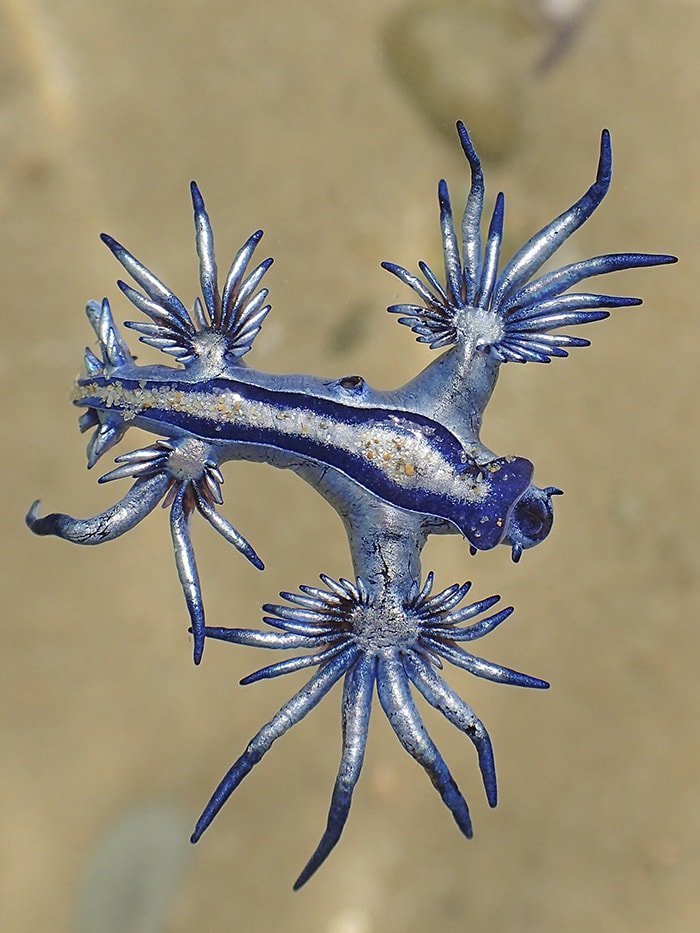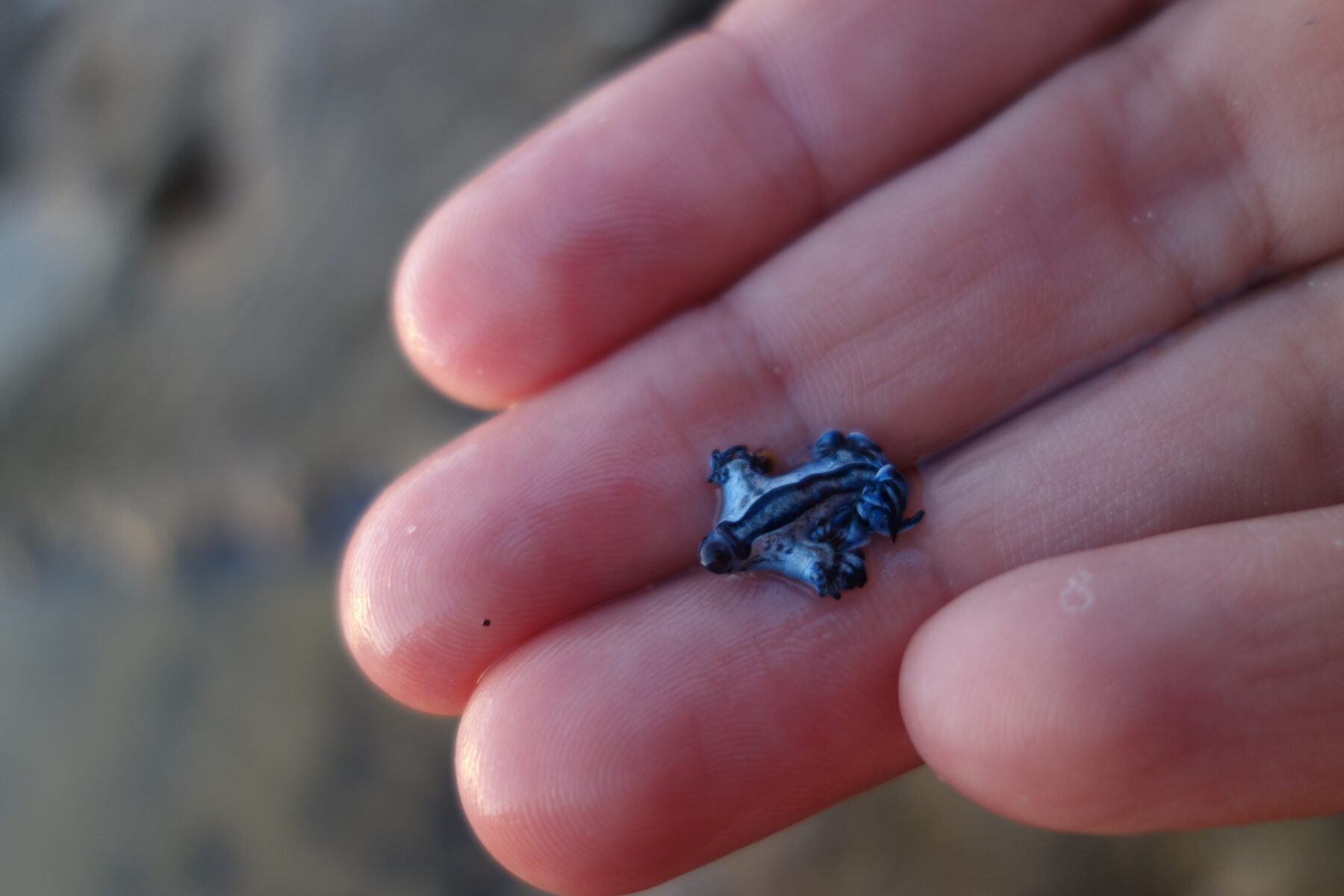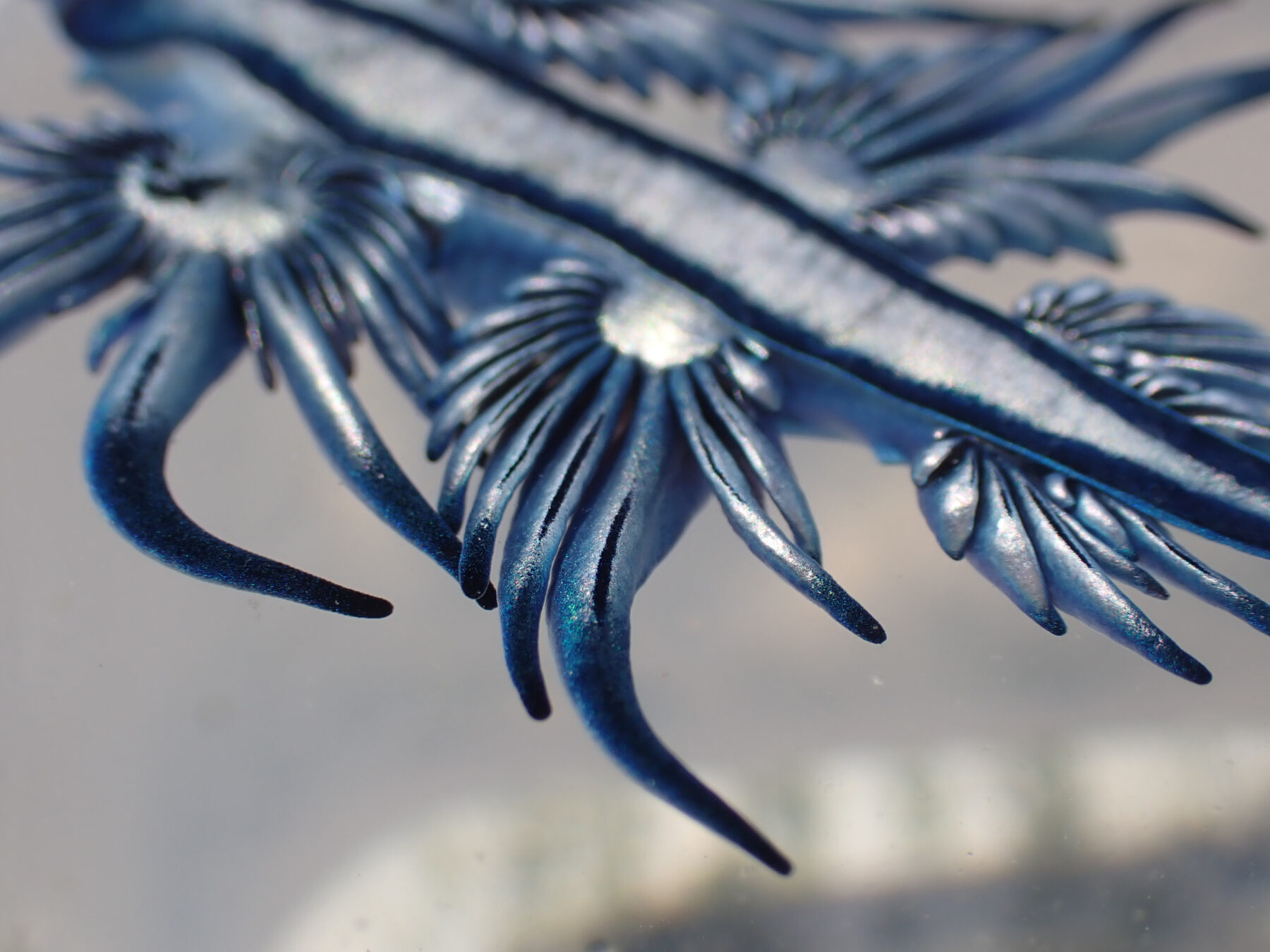The blue dragon is a master of disguise

Referred to as rare, angelic and deadly, it’s no wonder that the blue dragon (Glaucus atlanticus) has gained such a big reputation.
But according to the Director of the National Marine Science Centre at Southern Cross University Steve Smith, who’s an expert on sea slugs and founder of the citizen scientist based Sea Slug Census program, a lot of these descriptions are misleading.
Are blue dragons rare?
Unlike other species of nudibranch that live on the sea floor, blue dragons will swallow a little air bubble, which allows them to float on the ocean surface but means they’re at the mercy of the weather.
Often, strong onshore winds will leave blue dragons beached.
“The first public record of the blue dragon was in 1705. Ever since I can remember I’ve seen them washed up on local beaches,” Steve says.
“You can’t really predict when it’s going to occur. It depends on what the aggregations are like offshore and how long the wind blows for.
“Recently, I’ve seen maybe three or four major strandings, but some years you see very few. It’s not predictable on a year to year basis.
“But they’re not uncommon at all, they might go unnoticed a little bit but anyone who gets down onto the beach will regularly see them.”

Can they harm you?
To avoid predation, blue dragons feast on the stinging cells of blue bottles and transfer these to the tips of their cerata or “wing”, which gives them the ability to sting.
However, Steve says that there’s no guarantee that they’ll sting you.
“I’ve picked them up many times and I haven’t been stung.
“They’re not like bluebottles. They may have the capacity to sting but it doesn’t mean they’re going to do it every time.”
Steve says that people should still be vigilant as they can deliver stings equivalent to a blue bottle.

Countershading
The bright blue colouring of these nudibranchs is another way the animal avoids predation.
The technique is known as ‘countershading’ which describes why the blue dragon is darker on its upper side and light on its underside.
From above, the blue dragon blends into the colour of the ocean, but to anything below the surface they blend into the colour of the sky.
The sea slugs flattened body also allows them to calmly float along unnoticed.
Nudibranch mania

The popularity of nudibranchs is surging, with people keen to get out there and photograph the underwater beauties.
“More and more people have cameras, and they really are picturesque.
“Our Sea Slug Census goes from strength to strength. We’re adding more and more locations.
“The blue dragon is really one of those nudibranchs that showcase beauty, pattern and adaption.
“For beachgoers unless they’re specifically looking for nudibranchs in rock pools or by diving, they’re more likely to see blue dragons than any other type of nudibranch.”


